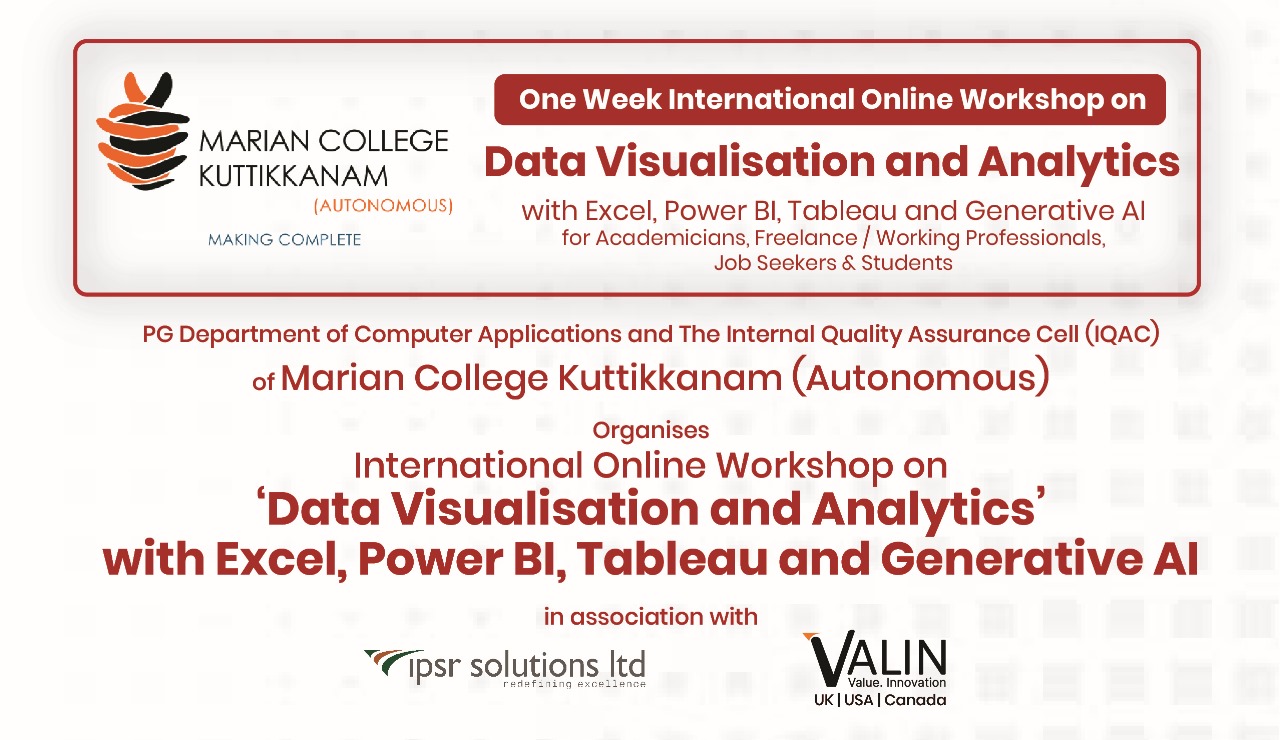
In the modern education system, data visualization and analytics play a crucial role in enhancing the learning experience and improving educational outcomes. With the increasing availability of digital tools and data, educators are now equipped to make data-driven decisions that can significantly impact student success. Data visualization allows for the transformation of complex data sets into clear, visual formats that are easy to interpret, enabling educators to identify trends, patterns, and outliers at a glance. This capability is essential for addressing the diverse needs of students and creating personalized learning experiences.
Data analytics provides educators with insights that can drive instructional strategies and interventions. By analyzing data from various sources such as assessments, attendance records, and student feedback, educators can identify areas where students may be struggling and adjust their teaching methods accordingly. This proactive approach enables teachers to provide timely support and resources, ultimately leading to improved student performance and engagement. Furthermore, data analytics can help educators evaluate the effectiveness of different teaching approaches and curricula, allowing for continuous improvement and innovation in the classroom.
In addition to supporting teachers, data visualization and analytics empower school administrators to make informed decisions about resource allocation and policy development. By examining data on student performance, enrollment trends, and financial metrics, administrators can identify areas that require attention and allocate resources more effectively. This data-driven approach ensures that schools can optimize their operations and provide a high-quality education to all students. Additionally, analytics can help schools identify successful programs and practices that can be scaled or replicated across the district or state.
The integration of data visualization and analytics in education also enhances communication and collaboration among stakeholders, including teachers, parents, and policymakers. Visual representations of data can facilitate discussions about student progress, school performance, and educational strategies, making it easier for stakeholders to understand complex information and work together towards common goals. This collaborative approach can lead to more transparent decision-making processes and foster a shared commitment to improving educational outcomes.
Moreover, data visualization and analytics prepare students for the future by equipping them with essential skills for the digital age. As data literacy becomes increasingly important in the workforce, teaching students how to interpret and analyze data can give them a competitive advantage. By incorporating data visualization tools and activities into the curriculum, educators can help students develop critical thinking, problem-solving, and analytical skills highly valued in various industries.
In conclusion, data visualization and analytics are vital components of the modern education system. They enable educators to tailor instruction to meet the needs of individual students, support administrators in making strategic decisions, and foster collaboration among stakeholders. By leveraging data to inform educational practices, schools can enhance the learning experience, improve student outcomes, and prepare students for success in an increasingly data-driven world. As technology continues to advance, the role of data in education will only become more significant, underscoring the need for continued investment in data literacy and analytics capabilities.

Dr. Sunil Job KA
Associate Professor and Academic Mentor, Marian College, Kuttikkanam (Autonomous and Chief of Academics, ipsr solutions limited. A resource person for several FDPs in OBE, Data Science, E-Learning etc., Dr Sunil has served as a Visiting Team Member of NCTE for ‘Grant of Recognition’ and as a resource person for the Affiliation Renewal Committee of MG University.
Dr. Suresh Namboothri
The Founder Member of Espoir Technologies Pune A former Chief Operating Officer with Tata Motors, he was part of the team that developed the first Indian car – Indica. A well-known resource person for FDPs on OBE, Critical and Creative Thinking, Dr Suresh Namboothiri, a designer and developer of 200+ products with over 30 years of industry experience, is also the founder of Espoir Technologies, Pune. He is a Mentor, Researcher, and Educator in addition to a senior Corporate Consultant.
Mr Win Mathew John
HoD and Additional Controller of Examinations, Marian College Autonomous, Kuttikkanam. Mr Win Mathew John, with 25 years of teaching experience has completed his MSc Physics, MCA, MTech and MPhil is currently pursuing PhD in Data Science. He has 30 plus Conference papers, 10 plus Journal Publications, and 2 Certifications to his credit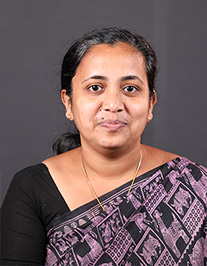

The National Level Online Workshop on ‘Data Visualisation and Analytics’ with Excel, Power BI, Tableau and Generative AI’ organised by Marian College, Autonomous, Kuttikkanam in association with ipsr solutions limited commenced on the fifth of July 2024. The function started by welcoming Rev Fr Boby Alex Mannamplackal, Manager, Marian College Autonomous, Kuttikkanam, Prof Dr Ajimon George, Principal, Marian College Autonomous, Kuttikkanam, Dr Mendus Jacob, Director – MCA, Marian College Autonomous, Kuttikkanam, Dr Thomas Varghese, Chair, Finance Program, JR Shaw School of Business, Northern Alberta Institute of Technology Canada, Dr Joby Cyriac, Vice Principal, Marian College Autonomous, Kuttikkanam, Dr Sunil Job KA, Associate Professor and Academic Mentor, Marian College Autonomous, Kuttikkanam, Mr Win Mathew John, Associate Professor and HoD, MCA, Marian College Autonomous, Kuttikkanam, Dr Suresh Namboothiri, Director, Espior Technologies, Pune, Ms Kochumol Abraham, Associate Professor, Marian College Autonomous, Kuttikkanam, and the entire participants from different parts of the country.
Dr Joby Cyriac, Vice Principal of Marian College Autonomous, Kuttikkanam delivered the Welcome Speech. He mentioned that this workshop offers a unique opportunity to learn from experts and explore the powerful tools. Dr Joby Cyriac, on behalf of all those participating in the programme, welcomed Rev Fr Boby Alex Mannamplackal, Dr Thomas Varghese, Dr Ajimon George, the resource persons, and all the participants of the five-day online workshop on ‘Data Visualisation and Analytics’ with Excel, Power BI, Tableau and Generative AI.
During his Presidential Address, Rev Fr Boby Alex Mannamplackal, Manager, Marian College Autonomous, Kuttikkanam expressed his gratitude for seeing participants from different parts of the country. He expressed his hope that the participants will gain considerably from the week-long programme. He informed that one needs to gain knowledge about Artificial Intelligence as it will rule the world in the days to come. Rev Fr Boby mentioned that as an academician, one should know and be able to teach using AI tools and also to teach future students and the workforce how to use this new technology. He concluded his speech by thanking all the participants for their active interest in the topic which leads to the next level of Generative AI and will be useful in teaching and assessments.
Dr Thomas Varghese, Chair, Finance Program, JR Shaw School of Business, Northern Alberta Institute of Technology Canada, who delivered the inaugural speech expressed his honour and pleasure to be invited to open the session which brings together some of the most innovative minds around the globe to showcase cutting-edge tools in data analytics. He congratulated the visionary leadership of Marian College Autonomous for hosting such a timely topic which has aligned well with the vision of Marian College. Dr Thomas mentioned that Generative AI tools are reshaping the work process where a journey towards AI future is ongoing and, those who successfully transition to an AI-assisted operating modem will continually experiment and adapt to stay ahead of the others. He mentioned that this is an era where AI brings unprecedented challenges and opportunities. Dr Thomas hoped the forthcoming sessions would empower the participants to stay ahead and guide their organizations towards an effective AI integration.
Dr Sunil Job was the resource person on the first day with the topic Unlocking the Power of Tableau Public: Comprehensive Dashboard Creation. He mentioned that the workshop is completely customised in a completely experiential manner. Dr Sunil noted that the current century is driven by data analytics which fuels decision-making. He further said that the greatest possibility of data analytics is that it assists in informed/informative decision-making and can be divided into diagnostic, descriptive, predictive, and prescriptive analytics. 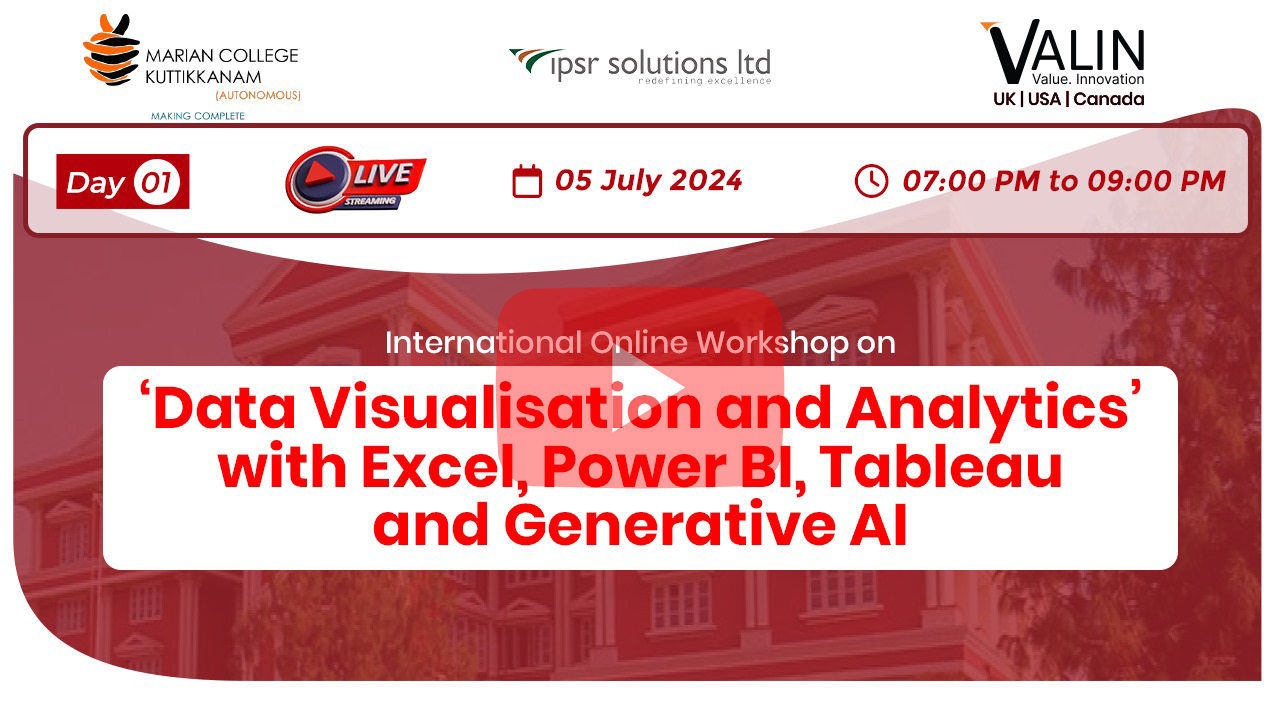 Dr Sunil Job shared a couple of slides 1: What is Data Analytics, 2: What is Data Visualization, 3: Tableau Public, 4: Scenario Banking Customers, and 5: Task on Building an Interactive Dashboard to enable a better understanding of the participants. He went on to mention that Data Analytics is a combination of Basic Knowledge of Statistics, Domain Knowledge, and finally Software/ Programming. Dr Sunil noted that data analytics is becoming prominent because analytical possibilities have become more and more approachable and user-friendly. Moving on to Data Visualization, Dr Sunil stated that it is a graphical representation of information and data and by using visual elements like charts, graphs, images or maps, data visualization tools provide an accessible way to see and understand trends, outliers, associations and patterns in data achieved by the use of systematic mapping between graphic marks and data values in the creation of visualization.
Dr Sunil Job shared a couple of slides 1: What is Data Analytics, 2: What is Data Visualization, 3: Tableau Public, 4: Scenario Banking Customers, and 5: Task on Building an Interactive Dashboard to enable a better understanding of the participants. He went on to mention that Data Analytics is a combination of Basic Knowledge of Statistics, Domain Knowledge, and finally Software/ Programming. Dr Sunil noted that data analytics is becoming prominent because analytical possibilities have become more and more approachable and user-friendly. Moving on to Data Visualization, Dr Sunil stated that it is a graphical representation of information and data and by using visual elements like charts, graphs, images or maps, data visualization tools provide an accessible way to see and understand trends, outliers, associations and patterns in data achieved by the use of systematic mapping between graphic marks and data values in the creation of visualization.  Coming on to Tableau, known as the Grand Master of Visualization, connects to the ‘Data Connecting Page’ where it’s possible to seize the data and make updates if required. The work which one does with the data is on ‘Worksheets’ and any number of worksheets can be prepared to generate visuals. The next interface ‘Dashboard’ is a combination of multiple visuals which assist in making the right decision. The final interface ‘Storyboard’ is where one can present things. Dr Sunil stated that the Scenario is the process of examining and evaluating possible events or scenarios that could take place in the future an predicting the various feasible results or possible outcomes. He went on to mention that most managers use scenario analysis during their decision-making process to find out the best-case scenario as well as the worst-case scenario while anticipating profits or potential losses.
Coming on to Tableau, known as the Grand Master of Visualization, connects to the ‘Data Connecting Page’ where it’s possible to seize the data and make updates if required. The work which one does with the data is on ‘Worksheets’ and any number of worksheets can be prepared to generate visuals. The next interface ‘Dashboard’ is a combination of multiple visuals which assist in making the right decision. The final interface ‘Storyboard’ is where one can present things. Dr Sunil stated that the Scenario is the process of examining and evaluating possible events or scenarios that could take place in the future an predicting the various feasible results or possible outcomes. He went on to mention that most managers use scenario analysis during their decision-making process to find out the best-case scenario as well as the worst-case scenario while anticipating profits or potential losses.  Dr Sunil later introduced the data sets and the task of building an interactive dashboard which enables a better understanding of the participants.
Dr Sunil later introduced the data sets and the task of building an interactive dashboard which enables a better understanding of the participants.
Mr Sigin Jacob George delivered the Word of Thanks after the first day’s session in which he thanked the organisers, the resource persons and the participants for their active participation.
The second-day session of the five-day Workshop was handled by Mr Win Mathew John on the topic ‘Data Visualization Using Excel’. Mr John told the participants that through this workshop, participants will be able to explore the essential techniques and Best Practices for analyzing the data, creating insightful visualizations, making data-driven decisions and learning how to harness the power of Excel to transform raw data into meaningful insights through Excel. He stated that Data Visualization is a simple and accessible graphical representation method to understand data and is useful for identifying trends and outliers within our datasets.  Mr John stated that Data Analysis is a valuable skill that can help in making better judgements and, Microsoft Excel is one of the most used programs for Data Analysis with ‘Power Query’ which has four components namely 1: ‘Connect’ which makes connections in the cloud, on a service/locally, 2: ‘Transform’ which shape data to meet our needs, while the source remains unchanged, 3: ‘Combine’ which integrates data from multiple sources to get a unique view into the data, and 4: ‘Load’ which complete the query and load it into a worksheet/Data Model and refresh it periodically. He went on to mention that ‘Pivot Tables’ and ‘Pivotchart’ are powerful tools to calculate, summarize, and analyze data that allow us to view comparisons, patterns, and trends in the data. The process of creating a dashboard, a visual representation of key metrics that allows one to view and analyze data in one place quickly, was explained in detail to the participants. Mr John mentioned that to create a dashboard, Pivot Tables must be created initially and Pivot Charts are to be created using Pivot Tables. Later Slicers are to be added and finally Timeline to get the desired Data. Mr Win Mathew John further demonstrated how to create a dashboard using Excel.
Mr John stated that Data Analysis is a valuable skill that can help in making better judgements and, Microsoft Excel is one of the most used programs for Data Analysis with ‘Power Query’ which has four components namely 1: ‘Connect’ which makes connections in the cloud, on a service/locally, 2: ‘Transform’ which shape data to meet our needs, while the source remains unchanged, 3: ‘Combine’ which integrates data from multiple sources to get a unique view into the data, and 4: ‘Load’ which complete the query and load it into a worksheet/Data Model and refresh it periodically. He went on to mention that ‘Pivot Tables’ and ‘Pivotchart’ are powerful tools to calculate, summarize, and analyze data that allow us to view comparisons, patterns, and trends in the data. The process of creating a dashboard, a visual representation of key metrics that allows one to view and analyze data in one place quickly, was explained in detail to the participants. Mr John mentioned that to create a dashboard, Pivot Tables must be created initially and Pivot Charts are to be created using Pivot Tables. Later Slicers are to be added and finally Timeline to get the desired Data. Mr Win Mathew John further demonstrated how to create a dashboard using Excel. 
 After the conclusion of the session, Mr Win Mathew John also took the time to clarify the doubts of the participants.
After the conclusion of the session, Mr Win Mathew John also took the time to clarify the doubts of the participants.
Ms Kochumol Abraham was the resource person on the third day of the five-day Workshop on ‘Data Visualisation and Analytics’ with Excel, Power BI, Tableau and Generative AI with the topic ‘Data Visualization using Power BI’. Ms Kochumol explained the agenda of the day’s session is, Power BI, the Necessity of Power BI, the Product Suite of Power BI, Exploring Power BI Desktop, the Various Data Sources connected using Power BI, and finally how Reports can be generated using Power BI. She explained that Power BI can be called a visualization tool, a Business Analytic Tool or a Business Intelligence Tool. She mentioned that before the visualization of Data, one needs to get the Data.  Ms Kochumol further stated that Power BI is a Business Analytics Tool with which one can visualize Data. Once necessary data is collected, the second step is pre-processing or preparing data for analysis. The prepared data can be shared/connected to an analytical tool for visualisation. She further mentioned that the uniqueness of Power BI compared to Tableau or Excel is that, the insights can be shared with our teammates once a dashboard/visualization is created. Finally, the reports generated in Power BI can be embedded in any application. In short, Power BI is an analytical tool that can visualize data, share insights and embed them in any application. Power BI is a collection of components, namely Power Query, Power Pivot, Power View, and Power BI Service components. Ms Kochumol mentioned that Power BI has the maximum Google Search, Maximum Features, and Data Connectivity. She further explained the Product Suite, Power BI Desktop, Power BI Pro, Power BI Premium and Power BI Embedded, and informed the participants that the Power BI Desktop version, though with limited features is a free version suitable for beginners. Ms Kochumol showed how reports can be generated and get insights and inferences from one particular data.
Ms Kochumol further stated that Power BI is a Business Analytics Tool with which one can visualize Data. Once necessary data is collected, the second step is pre-processing or preparing data for analysis. The prepared data can be shared/connected to an analytical tool for visualisation. She further mentioned that the uniqueness of Power BI compared to Tableau or Excel is that, the insights can be shared with our teammates once a dashboard/visualization is created. Finally, the reports generated in Power BI can be embedded in any application. In short, Power BI is an analytical tool that can visualize data, share insights and embed them in any application. Power BI is a collection of components, namely Power Query, Power Pivot, Power View, and Power BI Service components. Ms Kochumol mentioned that Power BI has the maximum Google Search, Maximum Features, and Data Connectivity. She further explained the Product Suite, Power BI Desktop, Power BI Pro, Power BI Premium and Power BI Embedded, and informed the participants that the Power BI Desktop version, though with limited features is a free version suitable for beginners. Ms Kochumol showed how reports can be generated and get insights and inferences from one particular data. 
 Ms Kochumol cleared the doubts/queries of the participants after the completion of the session.
Ms Kochumol cleared the doubts/queries of the participants after the completion of the session.
Data Visualization using Tableau was the topic of the fourth day of the Online Workshop organised by the Internal Quality Assurance Cell of Marian College Autonomous, Kuttikkanam in association with ipsr solutions limited. Dr Sunil Job was the resource person for the two-hour session.  Dr Sunil job briefly explained the proceedings that he had demonstrated on the opening day of the workshop where he mentioned that the end product submitted to the stakeholder will be a report complete with insights or observations which assist the stakeholders in making decisions on the right track. In short, the credibility of the analysis/data analyst depends on what extent the decisions are provided. He stated that the quality of the data analyst depends on how well the observations and insights fit into the stakeholder’s requirement. In short, the requirement of the stakeholder must be understood at the very beginning and all analysis must be streamlined to that requirement in the right way. Dr Sunil further said that the role of a data analyst is to identify what variables/information are needed from the domain to answer the question of the stakeholder. One has to identify and pick the targeted data which correctly assists the stakeholder from the entire data collection. He also mentioned that a good data analyst must be a good communicator to correctly understand the requirements of the stakeholder. Regarding the importance of Dashboards, Dr Sunil said that Dashboards are very important as they provide a live interface where stakeholders will be able to slice and dice that data to make some observations. After the explanation of Data Visualization Using Tableau, Dr Sunil started the hands-on practical session on how to generate three activity data using Tableau Public Software.
Dr Sunil job briefly explained the proceedings that he had demonstrated on the opening day of the workshop where he mentioned that the end product submitted to the stakeholder will be a report complete with insights or observations which assist the stakeholders in making decisions on the right track. In short, the credibility of the analysis/data analyst depends on what extent the decisions are provided. He stated that the quality of the data analyst depends on how well the observations and insights fit into the stakeholder’s requirement. In short, the requirement of the stakeholder must be understood at the very beginning and all analysis must be streamlined to that requirement in the right way. Dr Sunil further said that the role of a data analyst is to identify what variables/information are needed from the domain to answer the question of the stakeholder. One has to identify and pick the targeted data which correctly assists the stakeholder from the entire data collection. He also mentioned that a good data analyst must be a good communicator to correctly understand the requirements of the stakeholder. Regarding the importance of Dashboards, Dr Sunil said that Dashboards are very important as they provide a live interface where stakeholders will be able to slice and dice that data to make some observations. After the explanation of Data Visualization Using Tableau, Dr Sunil started the hands-on practical session on how to generate three activity data using Tableau Public Software. 
 The practical session included a couple of tasks for better understanding of the participants. The session concluded by Dr Sunil answering the queries of the participants.
The practical session included a couple of tasks for better understanding of the participants. The session concluded by Dr Sunil answering the queries of the participants.
The fifth and final day’s session of the week-long Workshop ‘Data Visualisation and Analytics with Excel, Power BI, Tableau and Generative AI’ was handled by Dr Suresh Namboothiri on the topic ‘Data Analysis Using Generative AI’.  Dr Namboothiri started the session by explaining the difference between production and generation, where production revolves around something already existing, whereas, generation is creating something completely new, and stated that Generative AI uses Artificial Intelligence to generate something new. He explained the subject by showing a couple of examples from his own life to give the participants a better understanding. After assuring the participants had gained basic knowledge about Artificial Intelligence and Generative AI Dr Namboothiri shifted the discussion to prompting. He informed the participants that they must not go behind false information regarding prompts which are available on social media, but must put special effort into learning the opportunities and techniques of prompts. Using prompts allows for Idea Augmentation, Expand Thinking Horizons, Knowledge Synthesis, Personalize Learning, Enhance Creativity, and enter into Advanced Problem Solving. Dr Suresh Namboothiri further stated that a prompt is an input given to the model to guide its output and could be a question, a phrase, a keyword, or a sentence that informs the AI what kind of text it should generate. He also stated that prompting involves crafting clear and specific instructions or queries to elicit the desired responses from the language model and the input/output prompt technique in generative AI involves guiding the model’s output by providing explicit instructions/inputs within the prompt which allows for more control over the type, or format of the response /output that AI generates. During the interactive session, Dr Namboothiri stated that the Role/ Persona Prompting in Generative AI involves setting up a scenario where the AI model takes on a specific role, where the role defines its perspective and influences the type of output it generates and that Role/Persona prompting allows users to engage with AI models in more creative and interactive ways, resulting in diverse and often more engaging responses.
Dr Namboothiri started the session by explaining the difference between production and generation, where production revolves around something already existing, whereas, generation is creating something completely new, and stated that Generative AI uses Artificial Intelligence to generate something new. He explained the subject by showing a couple of examples from his own life to give the participants a better understanding. After assuring the participants had gained basic knowledge about Artificial Intelligence and Generative AI Dr Namboothiri shifted the discussion to prompting. He informed the participants that they must not go behind false information regarding prompts which are available on social media, but must put special effort into learning the opportunities and techniques of prompts. Using prompts allows for Idea Augmentation, Expand Thinking Horizons, Knowledge Synthesis, Personalize Learning, Enhance Creativity, and enter into Advanced Problem Solving. Dr Suresh Namboothiri further stated that a prompt is an input given to the model to guide its output and could be a question, a phrase, a keyword, or a sentence that informs the AI what kind of text it should generate. He also stated that prompting involves crafting clear and specific instructions or queries to elicit the desired responses from the language model and the input/output prompt technique in generative AI involves guiding the model’s output by providing explicit instructions/inputs within the prompt which allows for more control over the type, or format of the response /output that AI generates. During the interactive session, Dr Namboothiri stated that the Role/ Persona Prompting in Generative AI involves setting up a scenario where the AI model takes on a specific role, where the role defines its perspective and influences the type of output it generates and that Role/Persona prompting allows users to engage with AI models in more creative and interactive ways, resulting in diverse and often more engaging responses.  According to Dr Namboothiri, in the context of Generative AI, zero-shot, one-shot, and few-shot learning refers to how much example data or ‘shots’ the AI Model is provided to learn a new task and each of these learning styles can be used in different situations, based on the complexity of the task and the familiarity of the model with the task. He mentioned that the Interaction prompts are directives or questions used to guide or stimulate a conversation, interaction, or response from a system and are a crucial part of creating meaningful and contextually relevant dialogues within a human-machine interaction framework. Dr Namboothiri further stated that interaction prompts serve as the starting point for generating a response, and to guide through the process and reach a logical conclusion. They can be crafted to encourage specific types of engagements such as 1 – Information Retrieval Prompt designed to obtain factual information or knowledge on a particular subject, 2 – Reflective or Analytical Prompts which analyze or reflect on a particular topic or data, and 3 – Creative or Generative Prompts which guide in creating something new or imaginative. Dr Namboothiri concluded the informative session by mentioning that accurate insights can be attained through prompting. After the informative session, Dr Namboothiri showed the participants various examples of prompts used in different situations and requirements and answered the queries of the participants.
According to Dr Namboothiri, in the context of Generative AI, zero-shot, one-shot, and few-shot learning refers to how much example data or ‘shots’ the AI Model is provided to learn a new task and each of these learning styles can be used in different situations, based on the complexity of the task and the familiarity of the model with the task. He mentioned that the Interaction prompts are directives or questions used to guide or stimulate a conversation, interaction, or response from a system and are a crucial part of creating meaningful and contextually relevant dialogues within a human-machine interaction framework. Dr Namboothiri further stated that interaction prompts serve as the starting point for generating a response, and to guide through the process and reach a logical conclusion. They can be crafted to encourage specific types of engagements such as 1 – Information Retrieval Prompt designed to obtain factual information or knowledge on a particular subject, 2 – Reflective or Analytical Prompts which analyze or reflect on a particular topic or data, and 3 – Creative or Generative Prompts which guide in creating something new or imaginative. Dr Namboothiri concluded the informative session by mentioning that accurate insights can be attained through prompting. After the informative session, Dr Namboothiri showed the participants various examples of prompts used in different situations and requirements and answered the queries of the participants.
The International Workshop on Data Visualization and Analytics organised by the Internal Quality Assurance Cell, Marian College Autonomous, Kuttikkanam in association with ipsr solutions limited has successfully concluded, marking an enriching and informative event attended by 745 participants. This workshop covered various key topics, including the application of Excel, Power BI, Tableau, and Generative AI in the field of data analytics. Throughout the sessions, participants engaged with experts and gained valuable insights into the latest trends and techniques in data visualization. The comprehensive presentations and hands-on activities provided an in-depth understanding of how these powerful tools can be leveraged to transform raw data into meaningful insights. Feedback from attendees has been overwhelmingly positive, highlighting a high level of satisfaction and an enhanced knowledge base. The workshop has not only facilitated skill development but also fostered a community of professionals eager to apply these techniques in their respective fields. This event has reinforced the importance of continuous learning and adaptation in the ever-evolving landscape of data analytics. The knowledge and skills acquired here are expected to significantly impact the way participants approach data-driven decision-making and problem-solving in the future. As the workshop concludes, the shared knowledge and experiences will undoubtedly contribute to the advancement of data visualization and analytics practices globally.
Join us for FREE to get instant email updates!

The Internal Quality Assurance Cell (IQAC), in collaboration with the […]
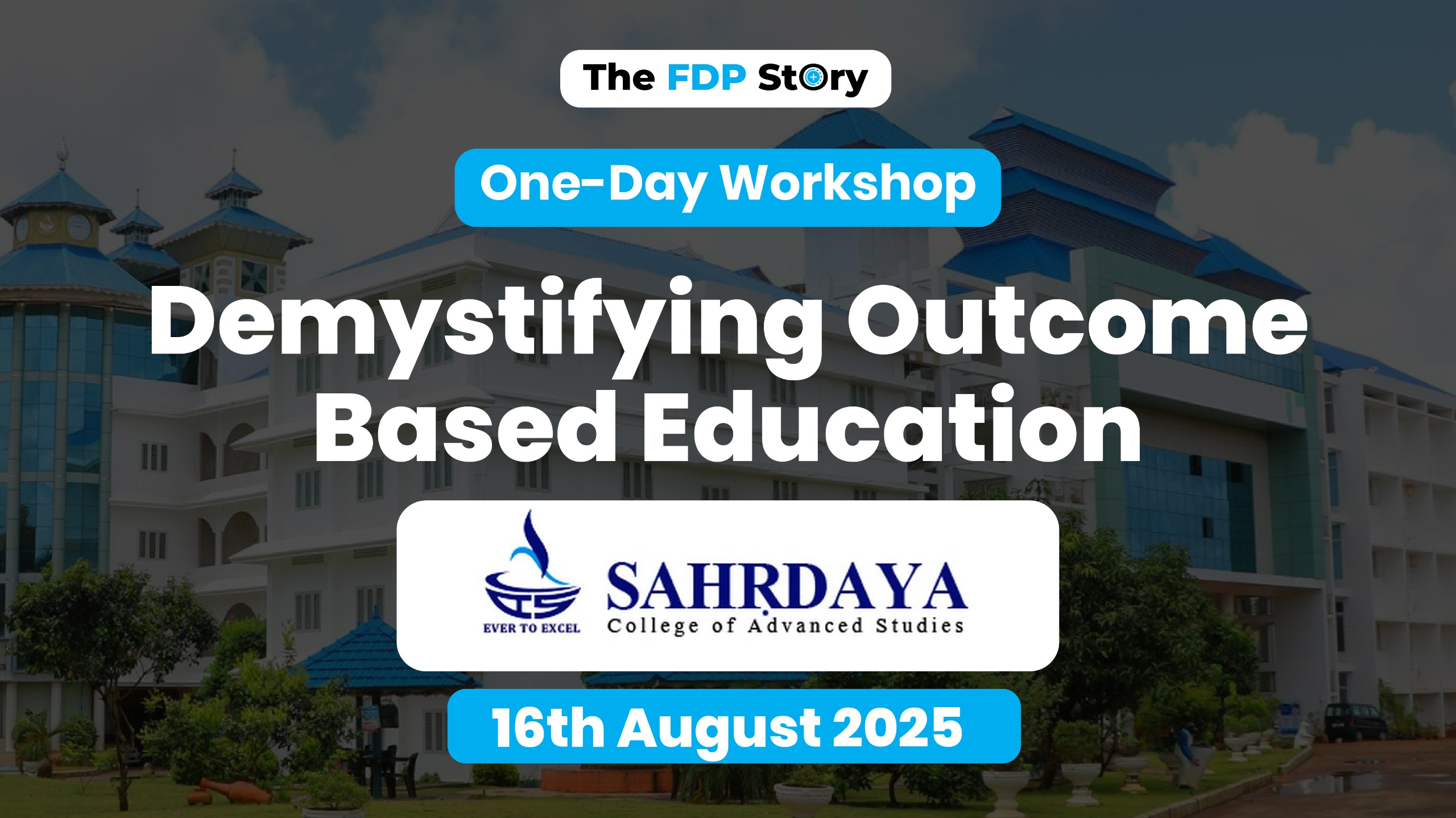
A one-day workshop on Demystifying Outcome-Based Education (OBE) was successfully […]

As part of Mar Athanasius College of Engineering’s continuous pursuit […]
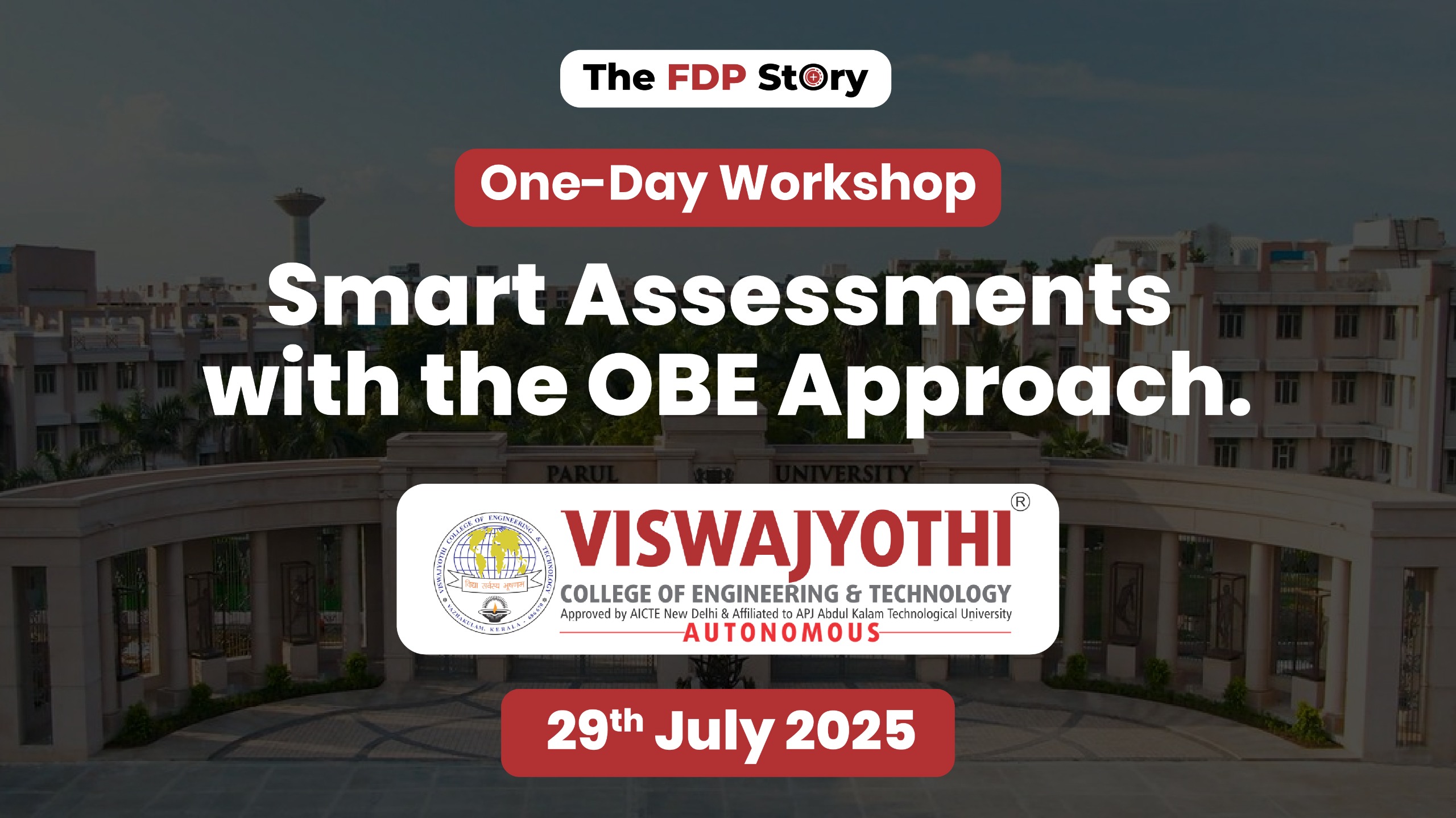
A one-day workshop on Smart Assessments with the OBE Approach […]
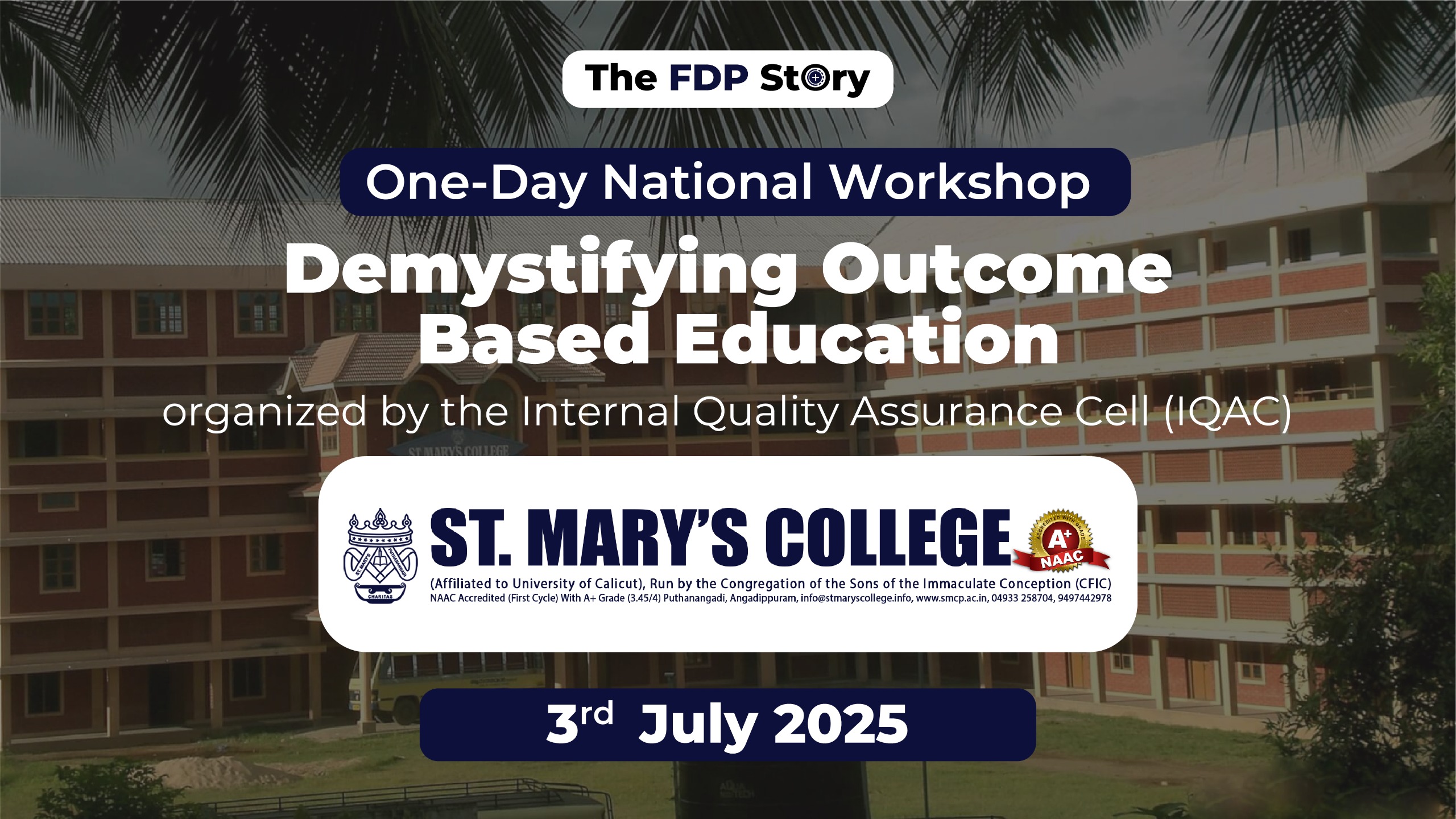
A one-day national-level workshop on Demystifying Outcome-Based Education (OBE) was […]
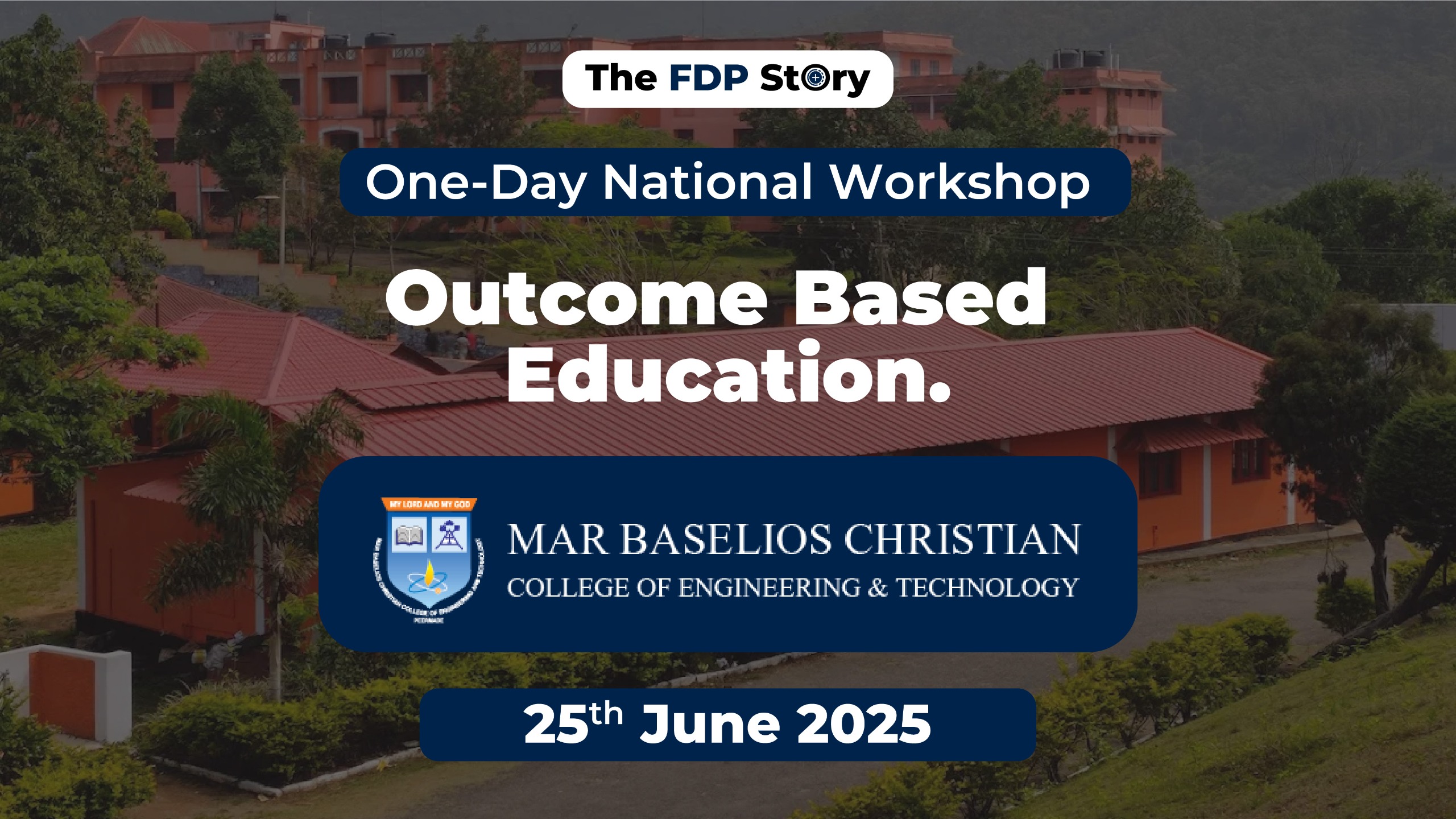
The Faculty Development Programme on Outcome Based Education (OBE) was […]

St. John Group of Institutions, under the Aldel Education Trust, […]
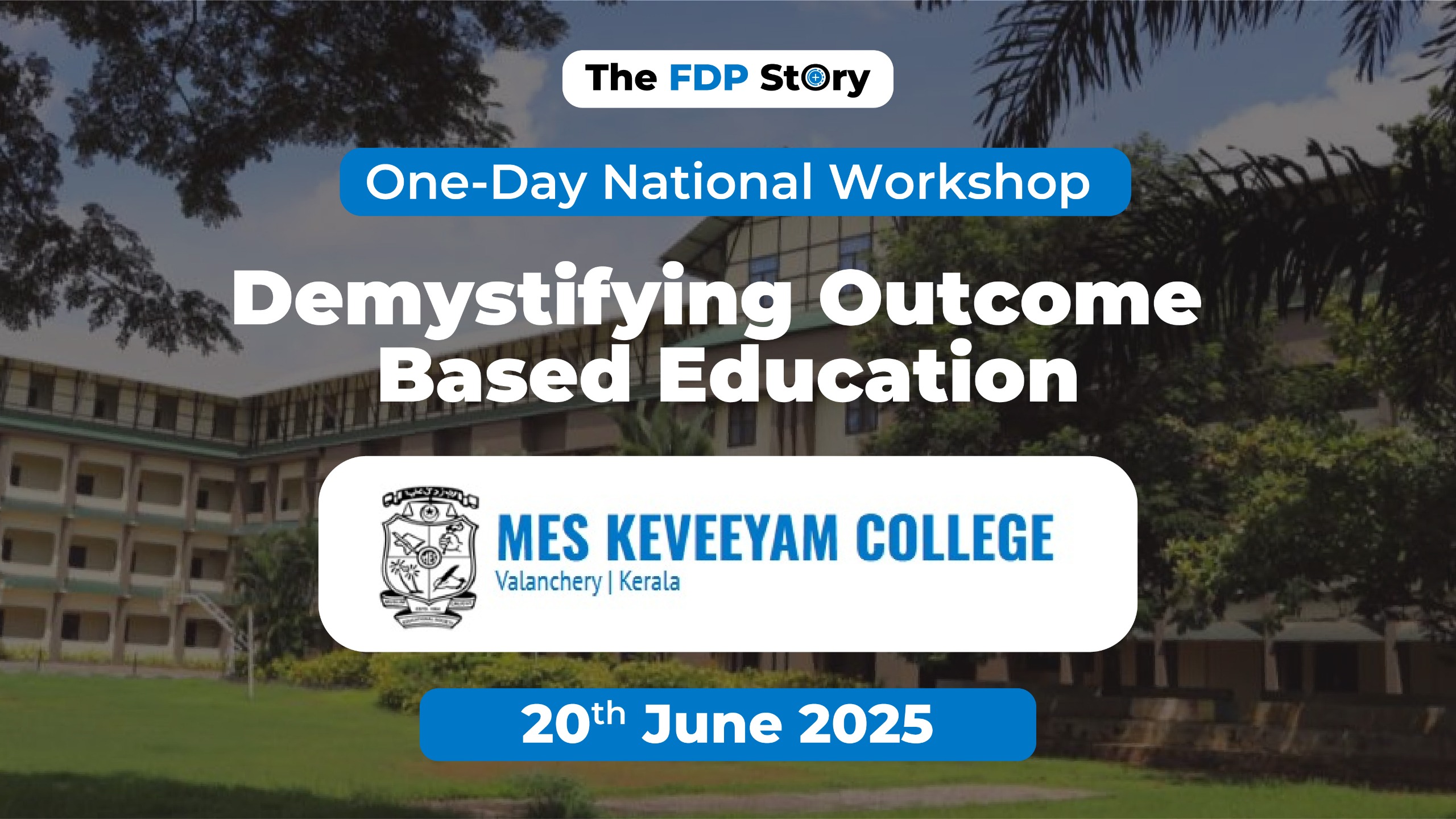
MES KEVEEYAM College, Valanchery, Malappuram, successfully hosted a One-Day National […]

As part of Parul University’s continued commitment to enhancing academic […]
Leave A Comment